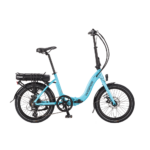That's a lot of battery.yes I would be wanting to carry with me on the bike I have 3x 20ah fitted already but undeseat one is a slideout so I have a spare for this a original knaap 20ah with Samsung cells i carry this with me in a backpack when doing long trips my range is about 100 miles if pushing but 120 if careful with the batteries.
Good side to that is that it does not matter so much about charging as you ride because the range is determined by the size of the battery. Downside is how much charging time you need, which is proportional to how much solar you have.
I have only a 1000Wh battery, 28Ah at 36V, so I rely on charging as I ride. I rarely go below 37V on the battery, which is about 50%, but frequently use 1500 to 2000Wh in a day, because it is straight from the sun.
You'll learn and maybe alter strategy with experience. For example, you might find you can leave one of the batteries behind and offset some weight against the solar.
You could get an idea of how it would work by buying one 100W panel and an Elejoy charge controller and just set them up at home and play around with it. The Elejoy has displays that tell you what's happening, and if you added a cheap Wh meter you could measure total energy harvested as well.
Always have a fuse in the circuit connecting to the battery. I have one in the solar connection too. Can't be too careful!







